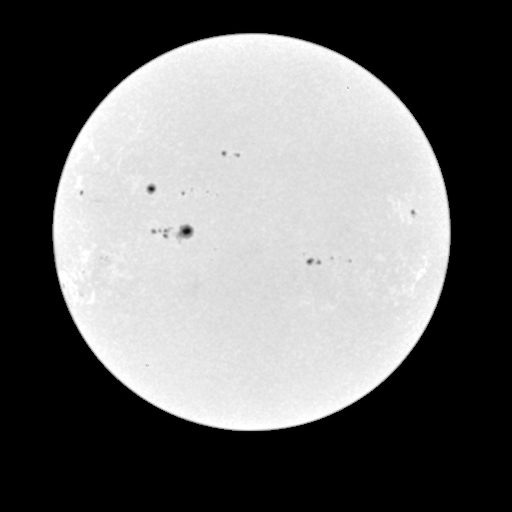
This is an image of the sun's photosphere made by scientists at the Lockheed Martin Solar and Astrophysics Labs. The small black dots are sunspots. If you want to learn more about sunspots, see the sunspot section under the 'Sun Block Adventures'.
It is not really correct to think of the sun as having a surface - the sun is made of ionised gas and in fact the atmosphere of the sun stretches all the way out to the Earth as the solar wind. But if we view the sun in white light (the light to which our eyes are sensitive) it appears to have an edge. This edge is the place in the sun's atmosphere where the gas gets so dense that light from deeper down can't escape. We call this edge the photosphere (`photos' is the Greek word for light) or visible surface.
When the first observations of the visible surface of the sun were made in 1611, by Galileo, Fabricius and Scheiner, they saw that it was not quite the perfect, unblemished sphere that they expected it to be, but that it had dark spots, called sunspots. This observation got them into some trouble, as the Christian doctrines at that time said that the sun was a perfect body, but they had observed imperfections!

|
This is an image of the sun's photosphere made by scientists at the Lockheed Martin Solar and Astrophysics Labs. The small black dots are sunspots. If you want to learn more about sunspots, see the sunspot section under the 'Sun Block Adventures'. |
Go back to the previous page.